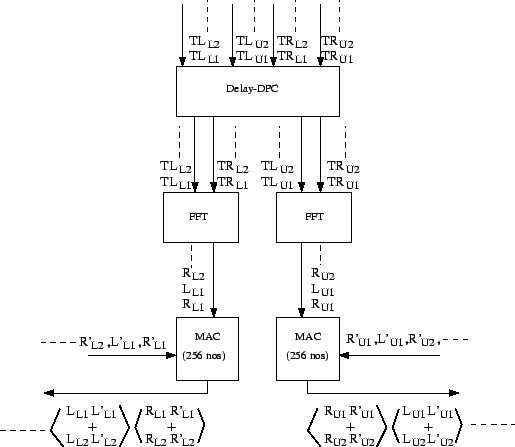 |
In this mode the visibility from both polarizations of all 30 antennas is measured but the number of spectral channels per baseline is limited to 128. Thus the spectral resolution is half that of the Non-Polar mode but the maximum bandwidth that can be observed in this mode is 32 MHz. Thus the observation will have the full sensitivity of the GMRT. For a non polarized source, this mode measures stokes I, and it is the most commonly used mode in interferometry.
 |
The Delay-DPC configuration for this mode is similar to that of the Non-Polar mode. The MAC is configured (see Fig 25.7) such that the adjacent channels of the same polarization are averaged together, thus reducing the number of channels from 256 to 128. Since each MAC unit has 256 accumulators, the other 128 accumulators of the same MAC are used to integrate the data from the second polarization of the same baseline.